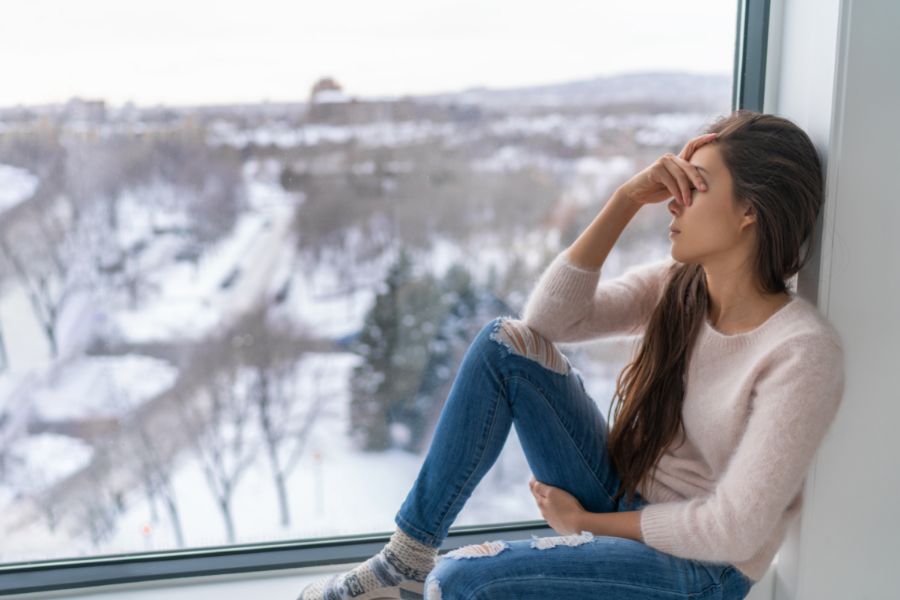By Chloe Barnett, BScReviewed by Dr. Liji Thomas, MD
Seasonal affective disorder (SAD) is a psychological condition in which those affected experience depressive symptoms during specific periods of the year. Thought to affect approximately 6% of those in the US, this condition can be alleviated by a range of natural remedies.
What is SAD?

Seasonal affective disorder is a recurrent major depressive disorder that has a seasonal pattern specifier, which means symptoms are usually experienced during the fall/winter months and remit in the spring/summer months.
The condition varies in severity. Some patients have milder symptoms and will subsequently be diagnosed with a subsyndromal type of SAD (S-SAD) commonly referred to as the “winter blues”. A different seasonal pattern may also be observed, where individuals experience depressive episodes during the spring/summer months and remission during the fall/winter months.
Symptoms and causes of SAD
Typically, those with SAD will experience some of the following symptoms:
- Low mood
- Weight gain due to overeating
- Sleeping more often than usual
- Lack of enjoyment in activities normally found pleasurable
- Irritability
Those with S-SAD may experience weight loss due to lack of appetite, issues sleeping or insomnia, and feelings of anxiety. There are several proposed theories to explain SAD, most of which come from a biological perspective. These include a lack of vitamin D and serotonin and overproduction of melatonin.
Natural Remedies for Seasonal Affective Disorder
There is a range of options widely used to treat SAD (some of which include drug treatments such as antidepressants, as well as cognitive-behavioral therapy). Alongside these treatment methods, patients may benefit from a range of natural remedies that can be used to manage and prevent symptoms.
Light therapy
Light therapy is a common natural remedy used to treat seasonal affective disorder and is characterized by the use of a lightbox to replace the lack of sunlight in the fall/winter months. The light emitted from the box is approximately 20 times brighter than typical indoor lights. Its use is recommended for approximately 30 minutes to two hours per day, early in the morning.
In order to prevent potential symptoms from developing, users are suggested to start light therapy before the winter months begin. Furthermore, results are normally seen in a few weeks. Activities such as reading and eating are permitted while using the box, as long as light enters the pupils.
Light therapy may not be appropriate for everyone though. For example, its use is not recommended for photosensitizing medication such as antipsychotics and phenothiazines. Potential side effects for others may include headaches, eye strain, and blurred vision.
Exercise
Exercise is known to have a myriad of health benefits. It is linked to the prevention of cardiovascular and metabolic diseases, and muscle bone and joint diseases. The effectiveness of exercise interventions has been observed in those with non-seasonal major depression. As a consequence, these are being investigated for their usefulness in SAD.
Research investigating the impact of light therapy and aerobic exercise on symptoms of SAD found that 20 minutes of pedaling on a stationary bike was as effective as light therapy in producing a significant reduction in symptoms. Furthermore, it is suggested that regular exercise can increase serotonin levels in the brain. This finding could be beneficial to those with SAD, who typically have lower serotonin levels during depressive episodes.
The timing of exercise is important. For those with SAD, exercising at night is not recommended because it could cause a phase delay in the onset of melatonin release during the following night. Melatonin is a hormone produced by the pineal gland, which is involved in the regulation of wakefulness. If the cycle of melatonin production is disturbed by night-time exercise, individuals may struggle to sleep the following night.
Vitamin D
Vitamin D is synthesized by the skin following exposure to sunlight and is believed to play a role in serotonin activity. Those with SAD have been found to produce less vitamin D, and its deficiency has been associated with clinically significant depressive symptoms.
There are two natural remedies with the potential to address this. Firstly, those with SAD could spend more time outdoors. They should plan winter vacations to sunny climates before winter starts since after this period they lose the motivation to do so. Secondly, vitamin D supplements could be taken to increase levels. If taken before winter darkness begins, it may prevent the onset of symptoms.
Diet
Research has found that implementing diet changes may have a positive impact on reducing the onset and severity of symptoms in those with SAD. Specifically, patients should cut out nicotine, caffeine, and alcohol consumption, while maintaining a balanced diet such as the Mediterranean diet.
The consumption of processed food should be avoided due to the lack of vital nutrients including folate in such foods. Folate is found in a variety of vegetables including broccoli and Brussel sprouts, as well as legumes. Low levels of folate have been found to be associated with an increase in the onset of depressive symptoms.
Self-help
Finding ways to reduce stress is also of benefit in preventing the symptoms of SAD or at least in reducing their severity. Some methods could include meditation on deeper truths, walking, and intentionally focusing on the beauty and detail in ordinary things.
